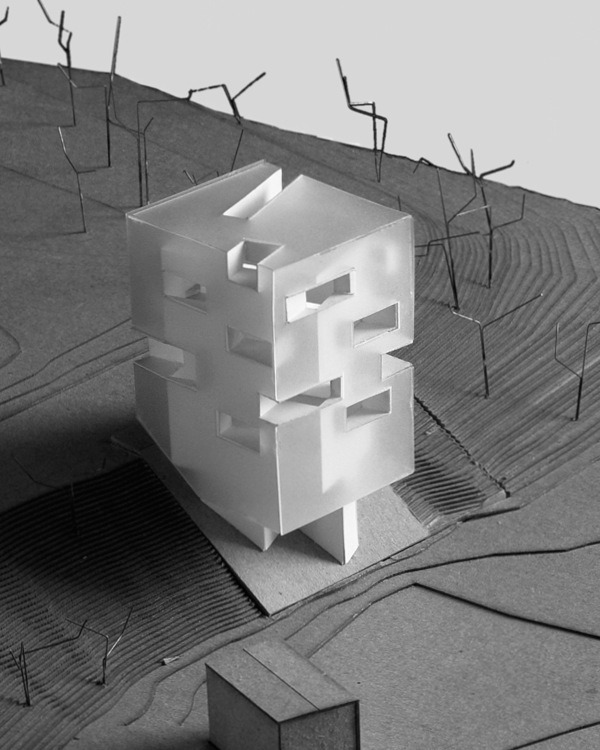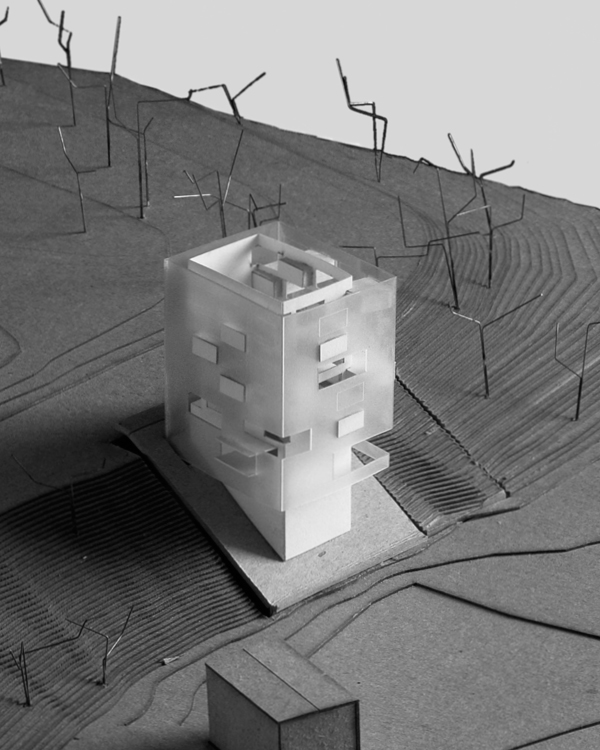Vertical Monastery
University of Texas at Austin, Advanced Design, Spring 2016
Visiting Critic: Marlon Blackwell
featured in ISSUE 013, April 2017
Vertical Monastery examines the relationship of religious and secular spaces within a monastery through an adaptation of a Catholic monastery typology from that of an isolated horizontal form to a transparent vertical body for new monastic life. The building establishes a symbiotic relationship between both secular and religious programs within the monastery. Projections, views, light, and hierarchy of scale are used to generate an understanding of how religious and secular spaces interface with each other and with the public.
A tall, solid central church space acts as the organizing center of the more intimate secular programs. The transparent secular spaces form the poche and act as the thickness isolating the church. At the same time, they act as the monastery’s primary interface with the public putting the academic and living activities of monks on display while their worship is secluded. Light into the church only exists through punctures generated by secular programs that allow a vertical cloister with views across and a voyeuristic relationship between secular and religious. While Tower Monastery attempts to overturn preconceptions of how monastery’s secular and religious spaces interact with each other and the public, it attempts to maintain many of the traditional needs of a Catholic monastery’s religious spaces.
Located on a prominent bend on the Mississippi River near Memphis, Tower Monastery attempts to play a role in actively reconsidering the organization of religious spaces in ways that provoke interactions to instigate stronger awareness of environment and self.
If we generalize monasteries for traditional catholicism as a more inward-looking discipline for an ascetic isolated lifestyle, new monasticism requires monks to have a community-based outward approach to their religious life.
Secular programs can be used generate more specific relationships as they interface between the religious and the outside public. They can be used as the source of light for the church, generating a rational understanding of the symbiotic relationship between the two.
In many traditional monasteries, program is organized around a cloister. Since churches are often more volume than area, the religious can be organized as the void and the secular program as a translucent thickness that allows for the religious to remain enclosed while maintaining a relationship with outside.
The skin of the building can stretch and warp itself to more clearly reveal the programmatic elements within. They can act as an additional veil for the individual secular programs while open up for communal secular programs.













![Large Axon [Converted] copy.png](https://images.squarespace-cdn.com/content/v1/5933129cbebafbc5b6c45592/1542905609784-9KN5FGVV0TNW8XOHL9XV/Large+Axon+%5BConverted%5D+copy.png)